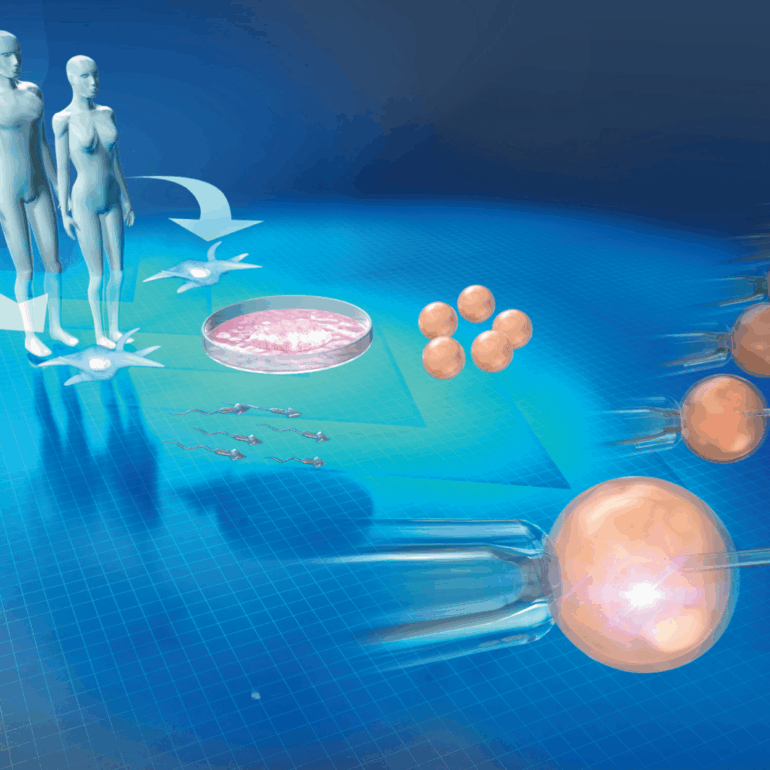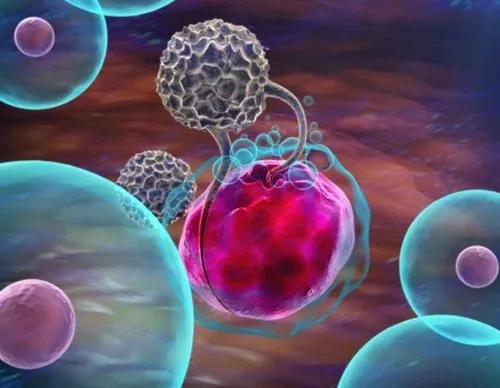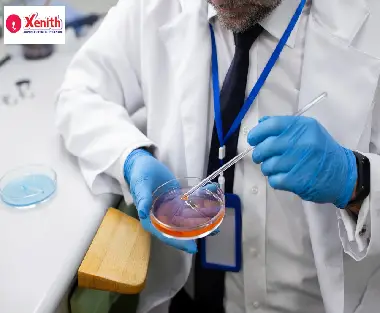Xenith Hope Circle
Join our new WhatsApp community
Frozen Embryo Transfer (FET): A Comprehensive Guide
What is Frozen Embryo Transfer (FET)?
Frozen Embryo Transfer, commonly known as FET, is a crucial step in the In-Vitro Fertilization (IVF) process. It involves thawing previously frozen embryos and transferring them into the uterus. This procedure offers couples a second chance at conception without the need for another round of egg retrieval and fertilization, making it a preferred choice for many undergoing IVF treatment.
ExcellentBased on 306 reviews Trustindex verifies that the original source of the review is Google.
Trustindex verifies that the original source of the review is Google. Baisakhi Biswas05/06/2025Amazing experience with Xenith wakad centre.All the doctors and nurses, staffs are very good, their behaviour is so polite. Mamta ma'am and her team bring the best news of my life.Thank you all 😊Trustindex verifies that the original source of the review is Google.
Baisakhi Biswas05/06/2025Amazing experience with Xenith wakad centre.All the doctors and nurses, staffs are very good, their behaviour is so polite. Mamta ma'am and her team bring the best news of my life.Thank you all 😊Trustindex verifies that the original source of the review is Google. Khetan Ganvir03/06/2025We are incredibly grateful to Xenith Advance Fertility Center, Wakad for making our dream come true. After a long journey, my wife conceived successfully through their expert care and guidance, and we are now expecting twins! Dr. Mamta Dighe and Dr. Pooja Chalukya were highly knowledgeable, compassionate, and supportive throughout the process. The staff made us feel comfortable and hopeful every step of the way. Their state-of-the-art facilities and personalized approach made a real difference. We couldn’t be happier with the outcome and highly recommend Xenith Advance Fertility Center to anyone struggling with infertility. Thank you for helping us start this beautiful new chapter in our lives!Trustindex verifies that the original source of the review is Google.
Khetan Ganvir03/06/2025We are incredibly grateful to Xenith Advance Fertility Center, Wakad for making our dream come true. After a long journey, my wife conceived successfully through their expert care and guidance, and we are now expecting twins! Dr. Mamta Dighe and Dr. Pooja Chalukya were highly knowledgeable, compassionate, and supportive throughout the process. The staff made us feel comfortable and hopeful every step of the way. Their state-of-the-art facilities and personalized approach made a real difference. We couldn’t be happier with the outcome and highly recommend Xenith Advance Fertility Center to anyone struggling with infertility. Thank you for helping us start this beautiful new chapter in our lives!Trustindex verifies that the original source of the review is Google. Nikita Badgujar30/05/2025Very Good experience, Entire team is very co-operative.Environment is also good.Trustindex verifies that the original source of the review is Google.
Nikita Badgujar30/05/2025Very Good experience, Entire team is very co-operative.Environment is also good.Trustindex verifies that the original source of the review is Google. Shraddha Borse30/05/2025I had a truly positive experience at Xenith. From the moment I walked in, I felt comfortable and well taken care of. The Doctors & staff was friendly, efficient, and always willing to helpTrustindex verifies that the original source of the review is Google.
Shraddha Borse30/05/2025I had a truly positive experience at Xenith. From the moment I walked in, I felt comfortable and well taken care of. The Doctors & staff was friendly, efficient, and always willing to helpTrustindex verifies that the original source of the review is Google. Neha Pohankar27/05/2025We are deeply grateful to the entire team at Xenith Center Wakad for their incredible support and care throughout our journey. From the very first visit, we felt welcomed and understood. A heartfelt thank you to the doctor for their expert guidance, to the embryologist for their dedication behind the scenes, and to the receptionists and support staff for always being kind, patient, and encouraging. Your collective compassion and professionalism made all the difference, and we will always hold a special place in our hearts for this amazing team.Trustindex verifies that the original source of the review is Google.
Neha Pohankar27/05/2025We are deeply grateful to the entire team at Xenith Center Wakad for their incredible support and care throughout our journey. From the very first visit, we felt welcomed and understood. A heartfelt thank you to the doctor for their expert guidance, to the embryologist for their dedication behind the scenes, and to the receptionists and support staff for always being kind, patient, and encouraging. Your collective compassion and professionalism made all the difference, and we will always hold a special place in our hearts for this amazing team.Trustindex verifies that the original source of the review is Google. Yugandhara Chaudhari17/05/2025We are deeply grateful to the entire team at Xenith IVF Centre for helping us achieve our dream in the very first attempt. After going through multiple IVF failures, we began our treatment here last year — and this year, we are overjoyed to be blessed with a baby. Our heartfelt thanks to Dr. Mamata Dighe, Dr. Pooja Chalukya, and Dr. Poonam for their exceptional care, expert guidance, and personal attention throughout our journey. Their confidence, patience, and transparent communication helped calm our anxieties and brought us immense comfort. The nursing staff has been consistently kind, attentive, and compassionate at every step — always present, always supportive. We’re also thankful to the reception team, who were approachable and available even during emergencies and after hours. Our experience at Xenith has been nothing short of incredible. Thank you all for being such a vital part of this life-changing journey.Trustindex verifies that the original source of the review is Google.
Yugandhara Chaudhari17/05/2025We are deeply grateful to the entire team at Xenith IVF Centre for helping us achieve our dream in the very first attempt. After going through multiple IVF failures, we began our treatment here last year — and this year, we are overjoyed to be blessed with a baby. Our heartfelt thanks to Dr. Mamata Dighe, Dr. Pooja Chalukya, and Dr. Poonam for their exceptional care, expert guidance, and personal attention throughout our journey. Their confidence, patience, and transparent communication helped calm our anxieties and brought us immense comfort. The nursing staff has been consistently kind, attentive, and compassionate at every step — always present, always supportive. We’re also thankful to the reception team, who were approachable and available even during emergencies and after hours. Our experience at Xenith has been nothing short of incredible. Thank you all for being such a vital part of this life-changing journey.Trustindex verifies that the original source of the review is Google. nikhil16/05/2025The entire team at Xenith was very helpful and paid attention to details and patient’s need and concerns. Thanks to their constant support. Would highly recommend the facility.Trustindex verifies that the original source of the review is Google.
nikhil16/05/2025The entire team at Xenith was very helpful and paid attention to details and patient’s need and concerns. Thanks to their constant support. Would highly recommend the facility.Trustindex verifies that the original source of the review is Google. Shweta Dervankar15/05/2025Excellent journey......we got a positive result.....we tried a lot outside but was disappointed.....in xenith Dr. Mamta ma'am give us a hope and bring happiness in our life.....strongly recommending Xenith..... Thank you so much team...... Must visit for your infertility problem.Trustindex verifies that the original source of the review is Google.
Shweta Dervankar15/05/2025Excellent journey......we got a positive result.....we tried a lot outside but was disappointed.....in xenith Dr. Mamta ma'am give us a hope and bring happiness in our life.....strongly recommending Xenith..... Thank you so much team...... Must visit for your infertility problem.Trustindex verifies that the original source of the review is Google. Mayuri Darwade14/05/2025I would like to express my sincere gratitude to the entire team at Xenith IVF Centre for making our dream come true in the very first attempt. A special thanks to Dr. Mamata Dighe, Dr. Pooja Chalukya, and Dr. Poonam for their expert care, guidance, and personal attention throughout the journey. Their confidence, patience, and clear communication helped ease all our worries and gave us great comfort. The nursing staff has been extremely kind, responsive, and caring at every stage, always available, and always supportive. I’d also like to thank the reception staff, who have been readily available even during emergencies and after hours. We had a very positive and reassuring experience at Xenith. Thank you all for being such a wonderful part of this life-changing journey.Trustindex verifies that the original source of the review is Google.
Mayuri Darwade14/05/2025I would like to express my sincere gratitude to the entire team at Xenith IVF Centre for making our dream come true in the very first attempt. A special thanks to Dr. Mamata Dighe, Dr. Pooja Chalukya, and Dr. Poonam for their expert care, guidance, and personal attention throughout the journey. Their confidence, patience, and clear communication helped ease all our worries and gave us great comfort. The nursing staff has been extremely kind, responsive, and caring at every stage, always available, and always supportive. I’d also like to thank the reception staff, who have been readily available even during emergencies and after hours. We had a very positive and reassuring experience at Xenith. Thank you all for being such a wonderful part of this life-changing journey.Trustindex verifies that the original source of the review is Google. J P30/04/2025We had a truly wonderful experience with Mamta Ma’am and her amazing team. From start to finish, everyone was kind, supportive, and genuinely caring. A heartfelt thank you to Pooja Ma’am, who was always just a call away whenever we had questions or needed guidance. Thanks to their expertise and constant support, we achieved a positive outcome. Highly recommended to anyone going through this journey—you’ll be in the best hands!
J P30/04/2025We had a truly wonderful experience with Mamta Ma’am and her amazing team. From start to finish, everyone was kind, supportive, and genuinely caring. A heartfelt thank you to Pooja Ma’am, who was always just a call away whenever we had questions or needed guidance. Thanks to their expertise and constant support, we achieved a positive outcome. Highly recommended to anyone going through this journey—you’ll be in the best hands!
The Frozen Embryo Transfer Process: Step by Step
- Preparation of the Uterine Lining: The first step in FET is preparing the uterus to receive the embryo. This involves hormone therapy, typically with estrogen and progesterone, to thicken the uterine lining, creating an optimal environment for implantation. A “perfect lining for embryo transfer” is usually between 7-14mm in thickness.
- Thawing the Embryos: On the day of the transfer, the frozen embryos are carefully thawed in a laboratory. This process must be done meticulously to ensure the embryos remain viable.
- Embryo Transfer Procedure: The actual embryo transfer is a straightforward procedure that is generally painless. A thin catheter is used to place the embryo directly into the uterus. This process is guided by ultrasound to ensure precision. The procedure takes only a few minutes and doesn’t typically require anesthesia.
- Post-Transfer Care: After the transfer, patients are advised to rest for a short period at the clinic. Bed rest is often recommended for the first 24 hours to minimize any potential stress on the embryo. After embryo transfer diet chart typically includes foods rich in protein, healthy fats, and complex carbohydrates to support implantation and early pregnancy.
What Happens After Embryo Transfer?
Following the transfer, the embryo will hopefully implant into the uterine lining within a few days. Patients are usually advised to monitor their symptoms and avoid activities that may cause unnecessary strain. Common symptoms 7 days after embryo transfer can include mild cramping, spotting, or changes in discharge, though the absence of symptoms like white discharge is also normal.
Embryo Implantation and Early Pregnancy
Successful implantation leads to pregnancy, and after how many weeks IVF pregnancy is safe is often a concern for many. Typically, the pregnancy is considered more stable after the first trimester. HCG levels are monitored 10-15 days after embryo transfer to confirm pregnancy. The hCG levels 15 days after embryo transfer should ideally double every 48-72 hours, indicating a progressing pregnancy.
Frozen vs. Fresh Embryo Transfer
One of the most common questions is the difference between fresh and frozen embryo transfers. Fresh embryo transfers occur within a few days of fertilization, while frozen embryos are transferred at a later date. Research suggests that frozen transfers can have comparable or even higher success rates, particularly in cases where the uterine lining needs time to recover from hormone stimulation.
Tips for a Successful Frozen Embryo Transfer
- Follow Medical Advice: Stick to the medications prescribed, including estrogen and progesterone, as these are crucial for preparing your body.
- Diet and Lifestyle: Maintain a balanced diet and avoid activities that could elevate stress levels. Rest and relaxation are key.
- Monitor Symptoms: Pay attention to your body. Symptoms like back pain after IVF transfer or changes in discharge are common but should be discussed with your doctor if severe.
Conclusion
Frozen Embryo Transfer is a significant advancement in reproductive technology, offering flexibility and increased chances of success for many couples. Understanding the process, what to expect, and how to care for yourself post-transfer can greatly enhance the chances of a successful pregnancy.
Why Choose Xenith?
- Patient-centered care
- Specialty in Recurrent IVF Failures
- Focus on interventions
- High IVF success rates
- High Clinical Standard
- All treatments under one roof
Book Appointment Today!
Recent Posts

Can Diabetes Cause Retrograde Ejaculation? Here’s What You Need to Know
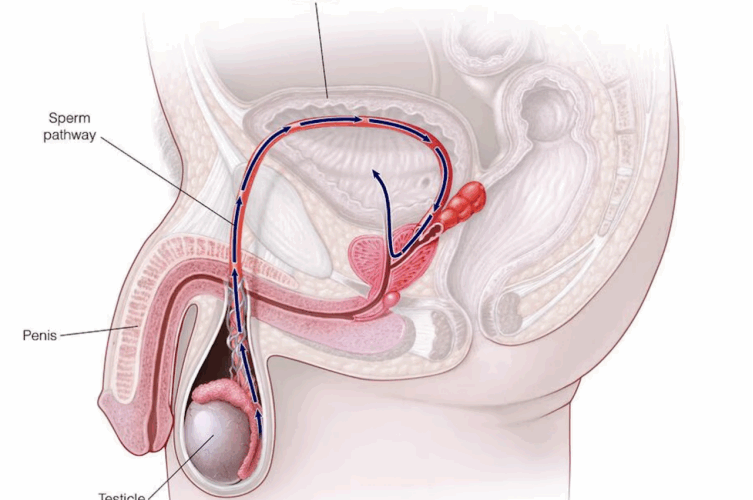
How to Reverse Retrograde Ejaculation Naturally and Medically
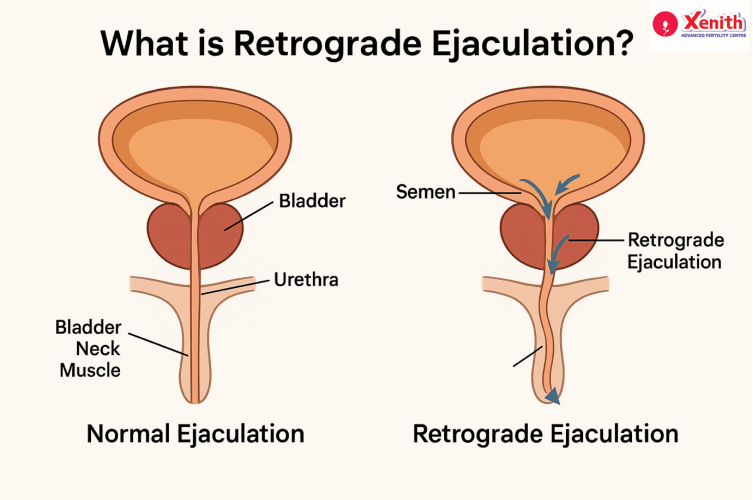
Retrograde Ejaculation and Male Infertility: A Complete Guide


